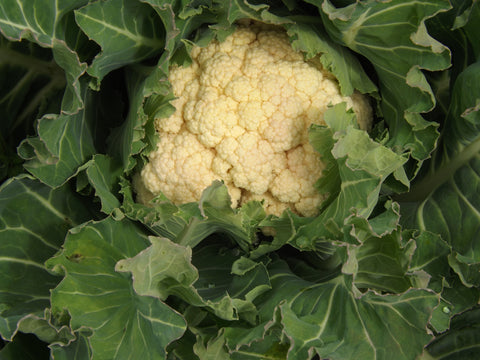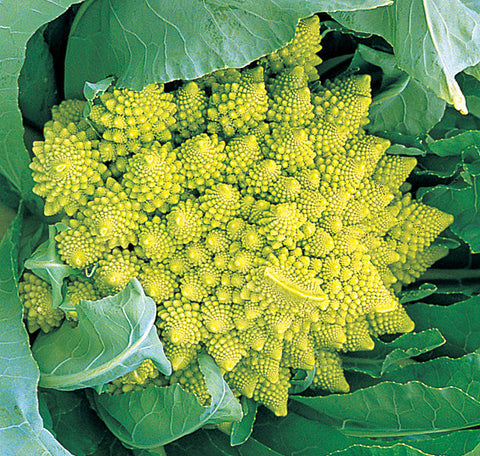SEED CALCULATOR ❌
Number of Plants 0
Weight 0 oz
at 0 seeds per foot

Cauliflower
Brassica oleracea botrytis cv.Certification
Harvest
Specialty
Season
The first reference to cauliflower is found in the writings of the Arab Muslim scientists Ibn al-'Awwam and Ibn al-Baitar, in the 12th and 13th centuries. There are four major groups of cauliflower. Italian: Diverse in appearance, biennial and annual in type include white, Romanesco, various green, purple, brown and yellow cultivars. This type is the ancestral form from which the others were derived. Northwest European biennial: Used in Europe for winter and early spring harvest, this was developed in France in the 19th century, and includes the old cultivars Roscoff and Angers. Northern European annuals: Used in Europe and North America for summer and fall harvest, it was developed in Germany in the 18th century, and includes the old cultivars Erfurt and Snowball. Asian: A tropical cauliflower used in China and India, it was developed in India during the 19th century from the now-abandoned Cornish type, and includes old varieties Early Patna and Early Benaras.
Major colors are white, orange, green an purple. Orange contains 25% more vitamin A than white varieties. Green is available both with the normal curd shape and a variant spiky curd called Romanesco broccoli. The purple color in cauliflower is caused by the presence of the antioxidant group anthocyanins, which can also be found in red cabbage and red wine. Cauliflower heads resemble those of broccoli, which differs in having flower buds. Its name is from Latin caulis (cabbage) and flower. Delicious cauliflower recipes.
Companions: celery
Inhibitors: tomatoes, strawberries

-
Price List
The first reference to cauliflower is found in the writings of the Arab Muslim scientists Ibn al-'Awwam and Ibn al-Baitar, in the 12th and 13th centuries. There are four major groups of cauliflower. Italian: Diverse in appearance, biennial and annual in type include white, Romanesco, various green, purple, brown and yellow cultivars. This type is the ancestral form from which the others were derived. Northwest European biennial: Used in Europe for winter and early spring harvest, this was developed in France in the 19th century, and includes the old cultivars Roscoff and Angers. Northern European annuals: Used in Europe and North America for summer and fall harvest, it was developed in Germany in the 18th century, and includes the old cultivars Erfurt and Snowball. Asian: A tropical cauliflower used in China and India, it was developed in India during the 19th century from the now-abandoned Cornish type, and includes old varieties Early Patna and Early Benaras.
Major colors are white, orange, green an purple. Orange contains 25% more vitamin A than white varieties. Green is available both with the normal curd shape and a variant spiky curd called Romanesco broccoli. The purple color in cauliflower is caused by the presence of the antioxidant group anthocyanins, which can also be found in red cabbage and red wine. Cauliflower heads resemble those of broccoli, which differs in having flower buds. Its name is from Latin caulis (cabbage) and flower. Delicious cauliflower recipes.
Companions: celery
Inhibitors: tomatoes, strawberries


